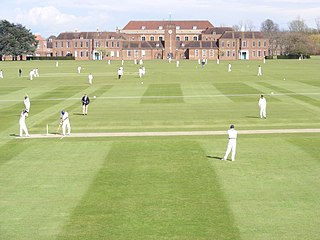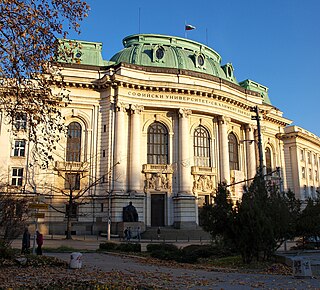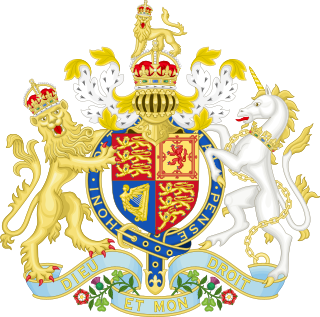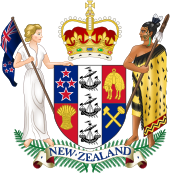
A teacher, also called a schoolteacher or formally an educator, is a person who helps students to acquire knowledge, competence, or virtue, via the practice of teaching.

Private schools in the United Kingdom are schools that require fees for admission and enrollment. Some have financial endowments, most are governed by a board of governors, and are owned by a mixture of corporations, trusts and private individuals. They are independent of many of the regulations and conditions that apply to state-funded schools. For example, the schools do not have to follow the National Curriculum, although many such schools do.
The Cecchetti method is variously defined as a style of ballet and as a ballet training method devised by the Italian ballet master Enrico Cecchetti (1850–1928). The training method seeks to develop essential skills in dancers as well as strength and elasticity. Cecchetti-trained dancers are commonly found in ballet and other dance companies throughout the world.

Sir Basil Urwin Spence, was a Scottish architect, most notably associated with Coventry Cathedral in England and the Beehive in New Zealand, but also responsible for numerous other buildings in the Modernist/Brutalist style.
In New Zealand, native schools were established to provide education for Māori. The first schools for Māori children were established by the Church Missionary Society (CMS) in the Bay of Islands after the arrival of the CMS in 1814. Bishop Pompallier arrived in 1838. Priests and brothers of the Marist order, established schools for the Māori throughout the country, including Hato Paora College (Feilding) and Hato Petera College (Auckland). St Joseph's Māori Girls' College (Taradale) was founded by the Sisters of Our Lady of the Missions.

Sir Trevor Colin Mallard is a New Zealand politician. He currently serves as Ambassador of New Zealand to Ireland since 2023. He was a Member of Parliament from 1984 to 1990 and again from 1993 to 2022. He served as Speaker of the New Zealand House of Representatives from 2017 until 2022.

A secondary modern school is a type of secondary school that existed throughout England, Wales and Northern Ireland from 1944 until the 1970s under the Tripartite System. Schools of this type continue in Northern Ireland, where they are usually referred to as secondary schools, and in areas of England, such as Buckinghamshire, Lincolnshire and Wirral,.
A homeroom, tutor group, form class, or form is a brief administrative period that occurs in a classroom assigned to a student in primary school and in secondary school. Within a homeroom period or classroom, administrative documents are distributed, attendance is marked, announcements are made, and students are given the opportunity to plan for the day. Such periods also act as a form of pastoral care, where teachers and administrators provide personal, social, or health advice. Homerooms differ in their nature, depending on the country and the specific school.

Education in Bulgaria is guided and overseen by Bulgarian Ministry of Education and Science. Compulsory education includes three years of pre-primary education, primary education, and secondary education. The schools start by age of seven and end the age of 18. Compulsory education at state schools is free of charge. The state and private higher education schools, colleges and universities charge fees, although they offer students scholarships.
Smyer Independent School District is a public school district based in Smyer, Texas, United States that serves students in east central Hockley County.

St Peter's College is a Catholic secondary school for boys in the Edmund Rice tradition, and dedicated to St Peter. It is located in the central Auckland area of Grafton, Auckland, New Zealand. With a roll of over 1300, the school is one of the largest Catholic schools in New Zealand. St Peter's College was established in 1939 as a successor of Auckland's earliest school and of St Peter's School, founded in 1857. However, Auckland also had another Catholic secondary school dedicated to St Peter, Hato Petera College or St Peter's Māori College, which existed for 90 years from 1928 until 2018 in Northcote.
Dr Timothy Francis Hawkes OAM is a former headmaster of The King's School, Parramatta, stepping down from the post in 2017 after serving in the role for almost 20 years.

The Education Act 1902, also known as the Balfour Act, was a highly controversial Act of Parliament that set the pattern of elementary education in England and Wales for four decades. It was brought to Parliament by a Conservative government and was supported by the Church of England, opposed by many Nonconformists and the Liberal Party. The Act provided funds for denominational religious instruction in voluntary elementary schools, most of which were owned by the Church of England and the Roman Catholics. It reduced the divide between voluntary schools, which were largely administered by the Church of England, and schools provided and run by elected school boards, and reflected the influence of the Efficiency Movement in Britain. It was extended in 1903 to cover London.

Education in Ethiopia was dominated by the Ethiopian Orthodox Church for many centuries until secular education was adopted in the early 1900s. Prior to 1974, Ethiopia had an estimated literacy rate below 50% and compared poorly with the rest of even Africa in the provision of schools and universities. After the Ethiopian Revolution, emphasis was placed on increasing literacy in rural areas. Practical subjects were stressed, as was the teaching of socialism. By 2015, the literacy rate had increased to 49.1%, still poor compared to most of the rest of Africa.

A certified teacher is an educator who has earned credentials from an authoritative source, such as the government, a higher education institution or a private body or source. This teacher qualification gives a teacher authorization to teach and grade in pre-schools, primary or secondary education in countries, schools, content areas or curricula where authorization is required. While many authorizing entities require student teaching experience before earning teacher certification, routes vary from country to country.
Al Ain English Speaking School (AAESS) is the only coeducational independent all-through school in Al Ain, catering for all ages three to 18; Nursery, Primary, Secondary and Sixth Form. The school was founded in 1976 by the construction company Balfour group who were commissioned to build part of the infrastructure of Al Ain's drainage system. The school started in a local villa, and helped by the ALGECO group. Mr Colin Jones became the first governor with Mrs Gill Didcott becoming the inaugural Principal. The school was first called the "Balfour School", before building on the site where it stands today in 1978 and becoming Al Ain English Speaking School. It has been expanded and enhanced considerably since then due to its popularity. The school was significantly expanded during the summer of 2014 and then again in 2016 with a new primary building being completed for the start of the academic term of 2019, with independent Primary Science Labs an ICT Labs being completed.

Education in Namibia is compulsory for 10 years between the ages of 6 and 16. There are approximately 1900 schools in Namibia of which 100 are privately owned. Namibian subjects' syllabi are based on the International General Certificate of Secondary Education which is part of Cambridge International. The Constitution directs the government to provide free primary education; however, families must pay fees for uniforms, stationery, books, hostels, and school improvements. Among sub-Saharan African countries, Namibia has one of the highest literacy rates.

Fanny Louise Irvine-Smith was a New Zealand teacher, lecturer and writer.
Rudi Lissau, born 26 June 1911 in Vienna and died 30 January 2004 in Brookthorpe, United Kingdom, was a Steiner school teacher, author, lecturer and anthroposophist.

Roland Hipkins (1894–1951) was an English artist who worked extensively in New Zealand between 1922 and 1951. He is especially noted for his work done in the wake of the 1931 Hawke's Bay earthquake. Works by Hipkins are held by the Hawkes Bay Cultural Trust, the Royal College of Art in London, and the Sarjeant Art Gallery in Wanganui.













